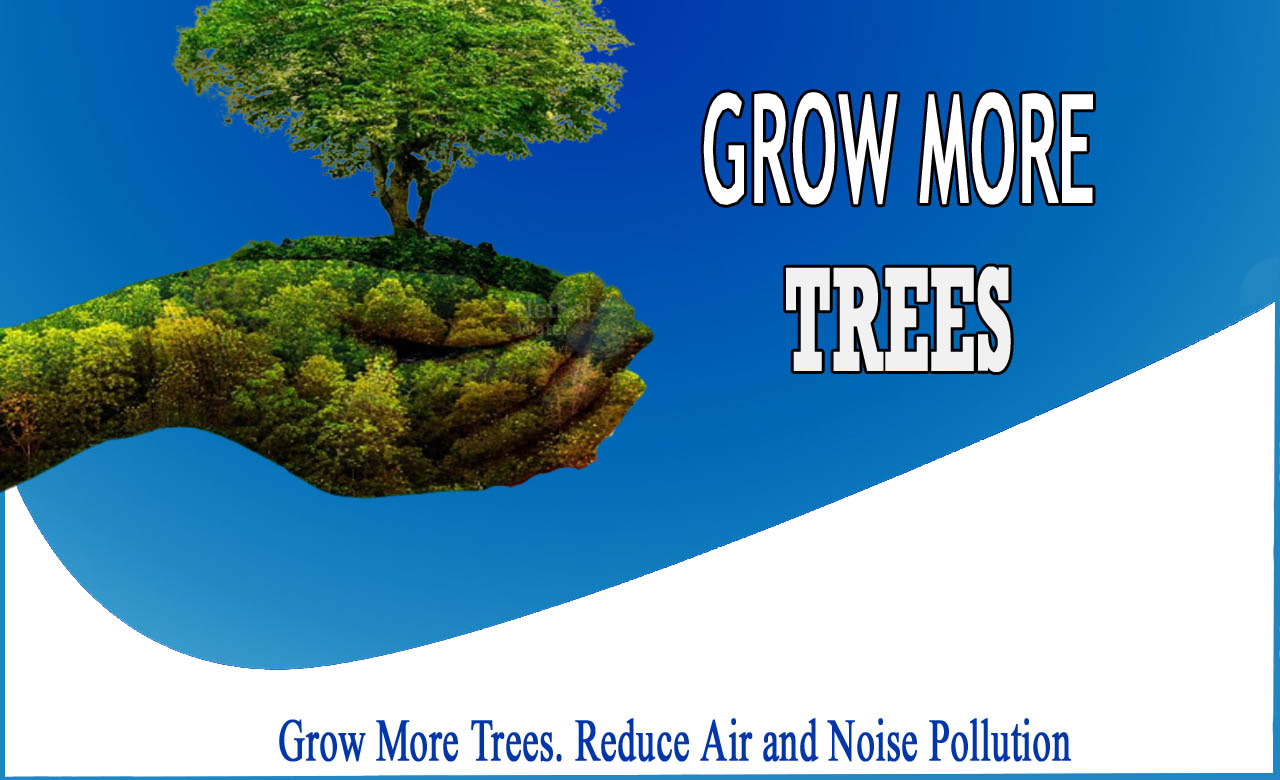We do not live quietly in a noisy world, and much of the noise pollution is man-made. Industry, mining, housework, transportation, there is a constant barrage of treble. Noise is now believed to be the cause of many health problems, including heart diseases. For many of us, the concept of noise pollution and its impact on humans is limited. But it is not-it's just as harmful to plants and animals.
According to the US National Park Service (NPS), noise pollution is a serious threat to the environment. According to experts, noise pollution can directly or indirectly destroy plants and even accelerate the extinction of some species in another century. Here are some of the most common questions related to noise pollution and flora, as well as explanations:
1-Can wood reduce noise pollution?
Noisy environments endanger peace and make people feel terrible. It is also considered a form of pollution and is also a health problem. Fortunately for us, we have millions of trees, "natural noise blockers". Trees absorb carbon dioxide, create shade, and prevent soil erosion, as well as act as a cushioning material and remove annoying urban noise.
According to a US Department of Energy study, trees and shrubs can reduce the level of noise perceived by the human ear by 50%.
2-How do trees reduce noise pollution?
Trees act as noise barriers, reducing pollution through a phenomenon called sound attenuation. Sound attenuation typically occurs when a sound wave travels a long distance until there is no energy to vibrate the air. Trees dampen noise through absorption, distraction, refraction, and masking.
Plant Sound Absorption: Some trees, such as stems, leaves, branches, and trees, absorb sound waves. Thick, grainy bark and fleshy leaves are particularly effective in absorbing sound due to its dynamic surface. In shrubs, it depends on their size.
Deflection of sound by plants: When a sound wave hits a huge tree trunk, the trunk is hard and does not vibrate. The sound wave is reflected from the trunk and returned to the sound source. On the other hand, when sound hits a soft surface such as a leaf, the leaf vibrates, and the sound wave is converted into other forms of energy. In addition, the phase of the sound can be changed to interfere with sound waves and reduce noise.
Plant Refraction of Sound: As we know, sound waves can be refracted. Groundcover vegetation, vines on the wall, and green walls all help to refract sound.
Plant Sound Masking: Trees obscure unpleasant sounds when branches sway, buzz, or stalk. Trees and shrubs also attract birds and squirrels. The barks and squeaks of birds and squirrels help hide noise pollution. In principle, the more surfaces (leaves, needles, branches), the better the noise reduction.
3-How much noise does a tree block?
The percentage of noise protection that a tree can provide depends on several factors:
i) Sound intensity, frequency, direction, and
ii) Tree position, height, width, density. However, as a rule of thumb, a tree barrier with an open distance of 30 meters can reduce sound by 21 dB. Studies show that soft floors attenuate low-frequency noise, and trees and shrubs attenuate high-frequency noise.
Problem of Air pollution:
The biggest problem facing humans is the reduction of air quality around us. Trees absorb odours and pollutants (nitrogen oxides, ammonia, sulphur dioxide, ozone), attach to leaves and bark, and filter particles in the air.
What is the cause of air pollution?
Industrial human activities, such as the burning of greenhouse gases, release toxic chemicals and particulate matter into the atmosphere. Concentrations worsen in crowded urban areas, and countries with huge manufacturing industries such as China, India, and Bangladesh at the highest levels in the world. Therefore, we must think globally about how we can reduce air pollution. Emissions from vehicles also contribute to poor air quality. Deforestation and burning of charcoal and wood for fuel are driving factors in developing countries. Logging not only releases CO2, but also prevents forests from purifying our air.
Many governments have air pollution index and "safe" air pollution level targets, but almost all countries are now above dangerous levels.
How can trees help in purifying Air?
Trees can purify the air and absorb harmful air particles and gaseous pollutants. Toxins such as nitrogen oxides, ammonia and sulphur dioxide pass through the leaves, bark, and roots. This improves the quality of the microclimate air around the trees and contributes to a healthier and cleaner environment overall.
Trees also absorb harmful carbon dioxide in our atmosphere. In a year, an acre of old wood absorbs as much carbon monoxide as a 26,000-mile drive! Trees not only purify the air for us, but also provide us with fresh oxygen to breathe. Particulate matter suspended in polluted air tends to settle on the leaves, and certain gases, including nitrous oxide (NO2), are absorbed into the stomata of the leaves, filtering the air, and slightly reducing pollution.
Let’s all grow more trees and breathe fresh Air!
Netsol Water is Greater Noida-based leading water & wastewater treatment plant manufacturer. We are industry's most demanding company based on client review and work quality. We are known as best commercial RO plant manufacturer, industrial RO plant manufacturer, sewage treatment plant manufacturer, and effluent treatment plant manufacturers. Apart from this 24x7 customer support is our USP. Call on +91-9650608473, or write us at enquiry@netsolwater.com for any support, inquiry or product-purchase related query.



